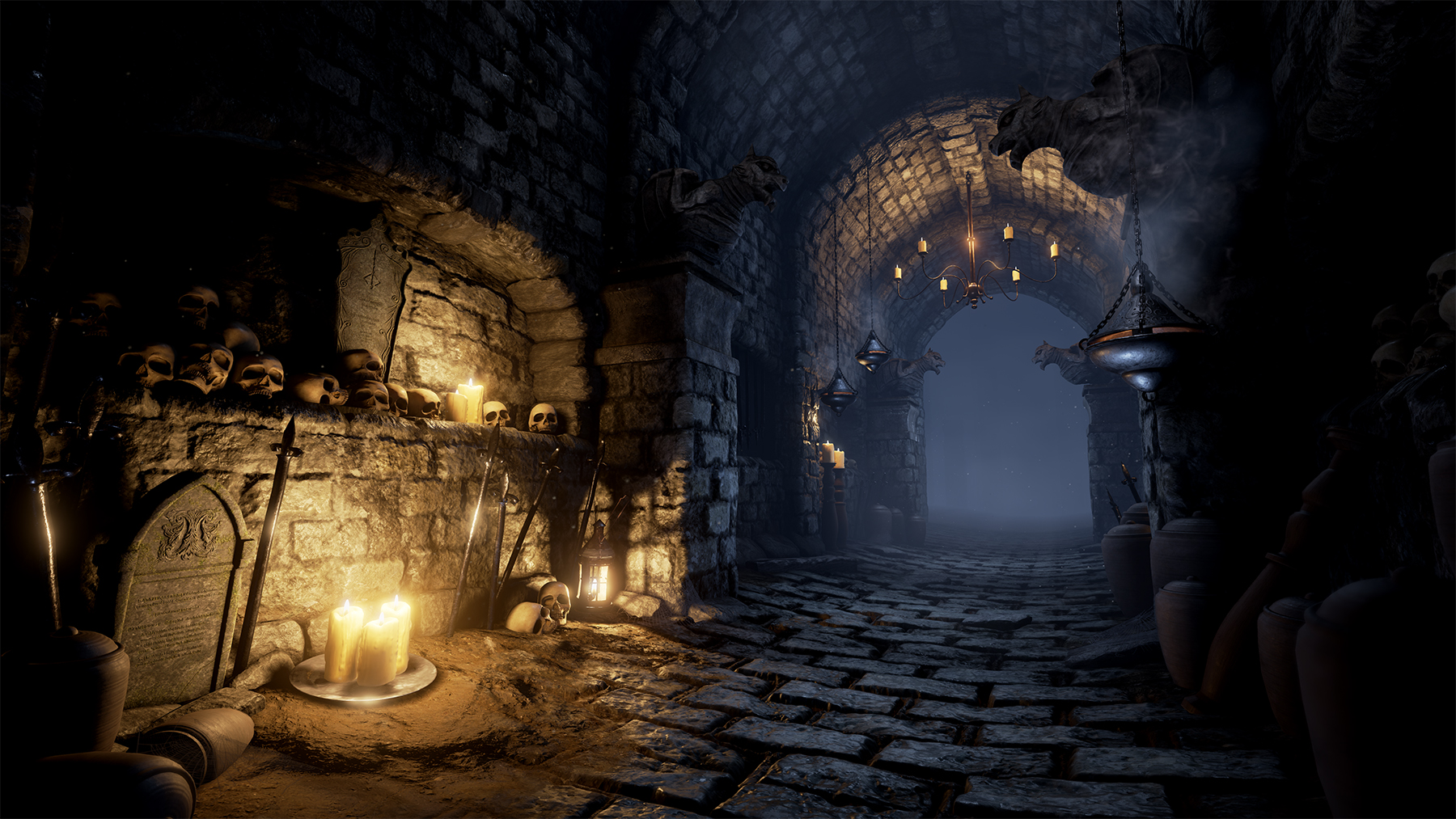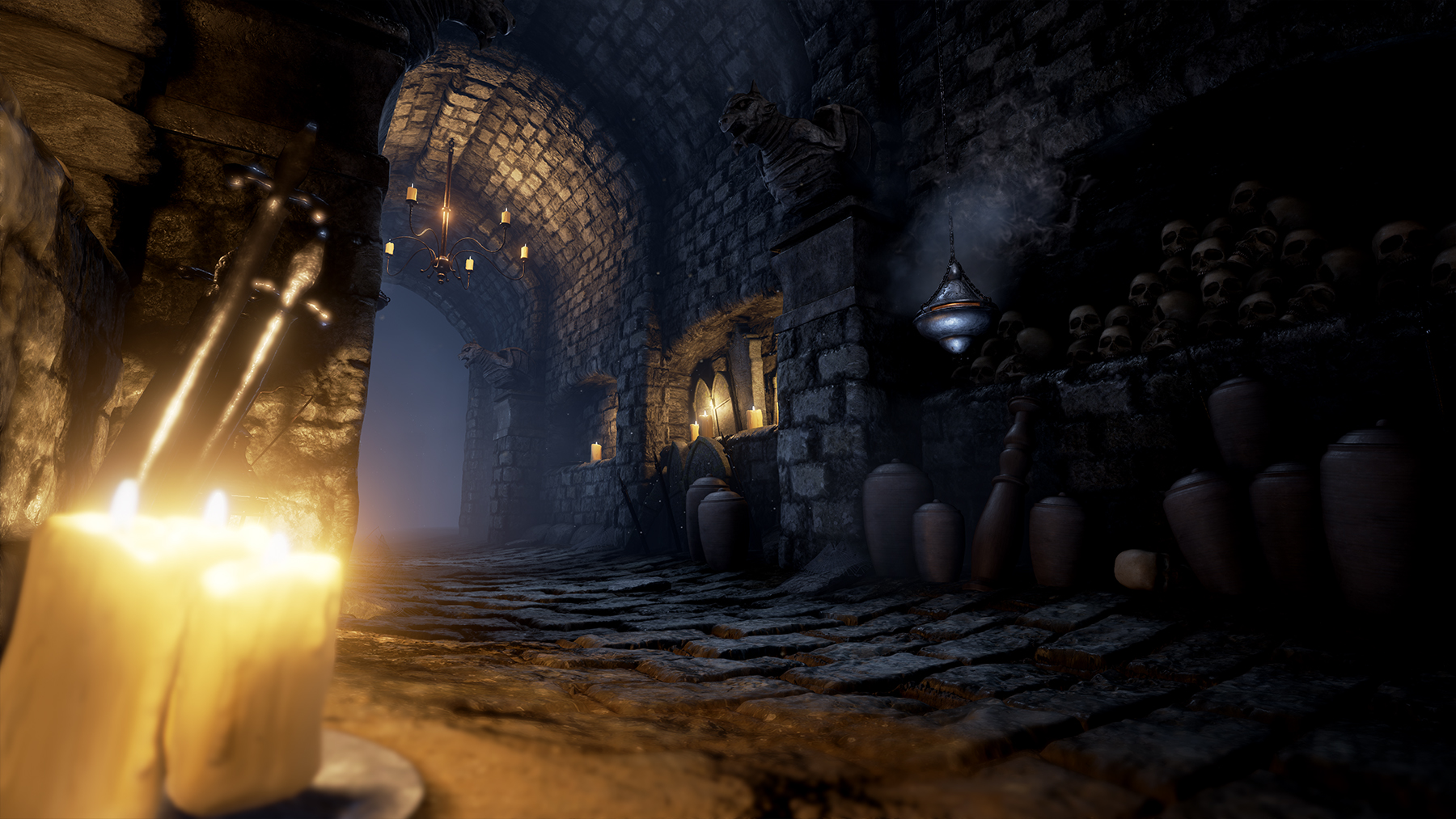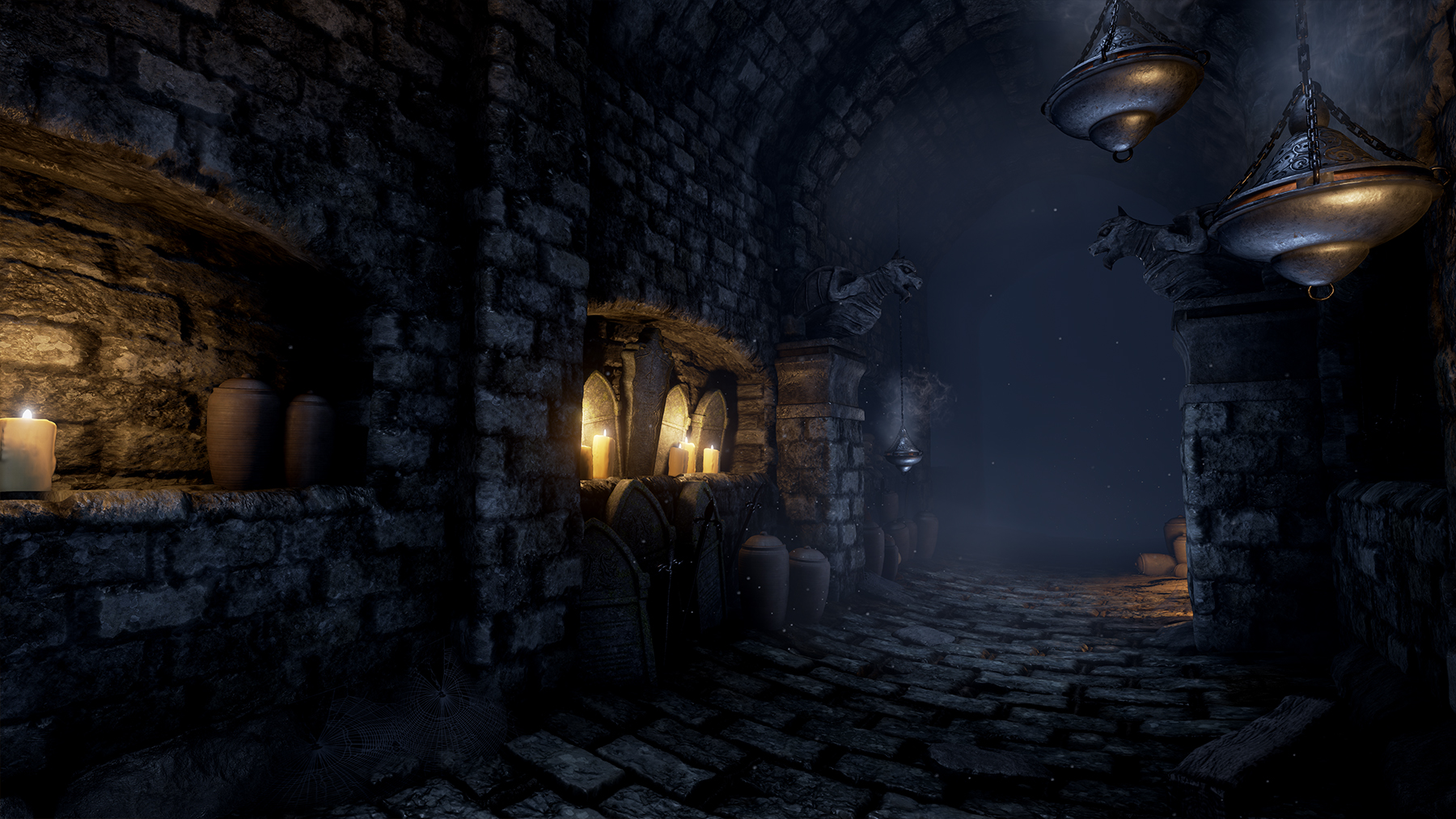The BRAWL² Tournament Challenge has been announced!
It starts May 12, and ends Oct 17. Let's see what you got!
https://polycount.com/discussion/237047/the-brawl²-tournament
It starts May 12, and ends Oct 17. Let's see what you got!
https://polycount.com/discussion/237047/the-brawl²-tournament
[UE4] Darksouls Style Dungeon
Hi everyone!
Just thought I would share my latest mini environment inspired by the style of the Darksouls and Bloodborne universes.
It took me 4 days to complete, I wanted to see what I could manage to pull off in a short time frame
its build in UE4 using baked lighting, textured using Substance Designer and Painter, Zbrush for the sculpting and Maya for the modeling.
There are a few props I reused from other previous environments but its mainly new assets
Will be posting a video as well in the following days and breakdowns if anyone would like.
Cheers! And happy new year!



The last one is just me having some fun with the background

Just thought I would share my latest mini environment inspired by the style of the Darksouls and Bloodborne universes.
It took me 4 days to complete, I wanted to see what I could manage to pull off in a short time frame
its build in UE4 using baked lighting, textured using Substance Designer and Painter, Zbrush for the sculpting and Maya for the modeling.
There are a few props I reused from other previous environments but its mainly new assets
Will be posting a video as well in the following days and breakdowns if anyone would like.
Cheers! And happy new year!



The last one is just me having some fun with the background


Replies
Making a narrow confined space is a pretty great idea for quickly making something that looks so polished and finished, when I periodically do this kind of thing it's always surprising to see how much quicker I've got.
Loving the touch with the glowing eyes at the end of the tunnel.
Yeah small spaces are really fun to do and it keeps it from stagnating and taking forever to complete.
Yeah true Darksouls might be a bit more towards the orange hues but I kind of enjoyed the more yellowish lights, its was just something I drew inspirations from
Yeah sure! I can post a bit of a breakdown this later this week!
Lovin' this!!! Get back in there and give us MOAR!
I've been a bit side tracked lately with other stuff but I'm aiming to have some breakdowns and a video ready this week!
Yeah some decals on the floor could have helped break it up a bit
Thanks again!
So here is the video I put together for it, hope you like it! Better late than never I guess hehe... Will be posting breakdowns tomorrow as well!
The scene is textured using Substance Designer and Painter, Zbrush for sculpting and Maya for modelling.
Part 1
Lighting & Shading
Here are a few different render modes for the scene showing the lighting, base color and roughness. I also made a quick specular map from the roughness maps in my shader that lowers the specular values in the cracks and divets of the material so it removes unwanted glossiness in those areas. Its just simply an inverted roughness map that gets put through a power node to create a contrast-y texture map where the lower parts are dark, this is then piped through a "min" Node that ensure no values go over the 0.5 limit - see material screenshots further down.
The scene is using baked lighting.
Some assets in the scene are using subsurface, like the candle and the skulls for example
Here Are some material examples from the scene, the base tiling material that is used for all tiling surfaces, I also have a version where I'm using vertex painting to be able to add dirt and salt streaks to my surfaces, its just a simple lerp between 2 different textures with the vertex color as the alpha.
I chose to make use of 2 channel normal maps for my assets, to make this work you have to but your normal map to compression setting BC7 and make it linear as well. then the normal map needs to be converted to the correct space again which is easily done by multiplying it by 2 and then add -1, then in the end add back the blue channel by using a derive normalZ. Its usually a good idea to normalize the normal map after these kind of procedures. This can however produce black artifacts if the normal map is way too strong to I also added a control vec3 for that so I could manipulate the channels if any artifacts would occur.
I chose to pack my texture as follows:
Tiling textures - Color and displacement in Alpha, normal map is Red and Green channel, roughness in Blue and AO in the alpha
Subsurface textures - Color and roughness in the Alpha, normal map is R & G then displacement in the Blue and SSS map in the Alpha
Standard textures without displacement - Color and roughness in Alpha, normal map is R & G then specular in Blue and metallic in Alpha with the possibility to turn off the metallic option.
These are all the master materials which I created instances of.
Here is a progress with the different states of the scene before reaching final.
Level construction kit
Here are some of the assets used in the scene.
I chose to make use of displacement for this scene on my tiling materials so the geometry is very simple but pre-tessellated a bit so its easier to get good results in UE4
I re-used some simpler props from my previous Hunters Dream scene as well as the styles fit together, it saved me some time so I didn't have to "re-invent" the wheel again just because. The grave stones and the metal stakes for example are re-used but tweaked a bit.
that scene can be found here if anyone is interested:
https://www.artstation.com/artwork/xZKvX
The basic construction kit:
Sculpts.
Some assets went through a sculpt pass which was super simple and mostly focusing on large forms then the rest was added inside Substance Painter.
Substance Designer materials.
I created all my tileables within substance designer and did all the channel packing as well before exporting.
Here are the main 2 materials used:
Hope someone finds this interesting/helpful
Thanks for looking!
Cheers
interesting to see that you calc the blue channel of the nrm map in the shader and saving up a channel to pack a different map - is that a more optimized approach?
Don't know that I'd say it's good or bad, it's interesting but it is very strongly noticeable if that wasn't what you were going for.
well done
Yeah that way you save a texture fetch, which also saves on memory on the gpu
I kinda think the composition works, it was a way I could make it feel larger than it actually is by hinting that there are more tunnels further down into the fog. As you said maybe not the most common approach but I kind of liked it
Yeah just doing a rough pass on sculpts really saves on time! The rest can easily be added in Painter.
EDIT: Also, why do you sometimes use both single colored specular and metallic at the same time? Is it to alter the specular reflection and not keep it locked to either just white or the base color? And why do you only do this for some textures?
And yes i would say having 2 maps instead of 3 is almost always worth it. There are exceptions of course, my foliage for example uses a 3 texture setup just because I need a lot of control over the shader and often end up "abusing" the normal map for foliage lol, the 2 texture approach doesn't handle cranked up normal maps very well as it produces artifacts at a certain intensity. Its all about the pros and cons and what is the best for your project. I myself also like the easier source file setup, its a bit cleaner with 2 maps that are fully packed than having 3 that might not be use to their full potential.
Well Displacement is a viable option but not for everything! There are games that uses it for terrain and rocks for example. The displacement can also be based on distance so the cost can be controlled.
If real time displacement is too expensive you could always apply the displacement map to a plane to create a mesh in Maya for example and use a reduced version as the LOD0 and then just simplify down the LOD chain. For me it saves a lot of work when it comes to personal projects since I don't have to bother making those kind of setups but I don't think its a "cheat" either as the same result can be achieved in the end with other means.
Its usually not the triangles that chokes the system, its everything else, shader math, textures, overdraw, vfx etc. It plays a part of course you cant go crazy but its usually not the biggest issue. For displacement its the actual real time tessellation that slows you down not necessarily the actual triangles produced. I'm no expert of course these are just noticed
Well for metals I usually just set the specular to a flat 0.5 and then let the base color do its thing. But I can also turn the metallic off for my objects and then use the specular to reduce glossiness in cavities of the mesh using the inverted smoothness map function I have in the shader. its just a way to be able to use the same master shader for both objects which makes it easier to manage content.
That shader is my standard asset shader that goes on pretty much all props and objects that aren't nature assets. I have another one for foliage, rocks and so on just because they require different things.
Hope that helps!